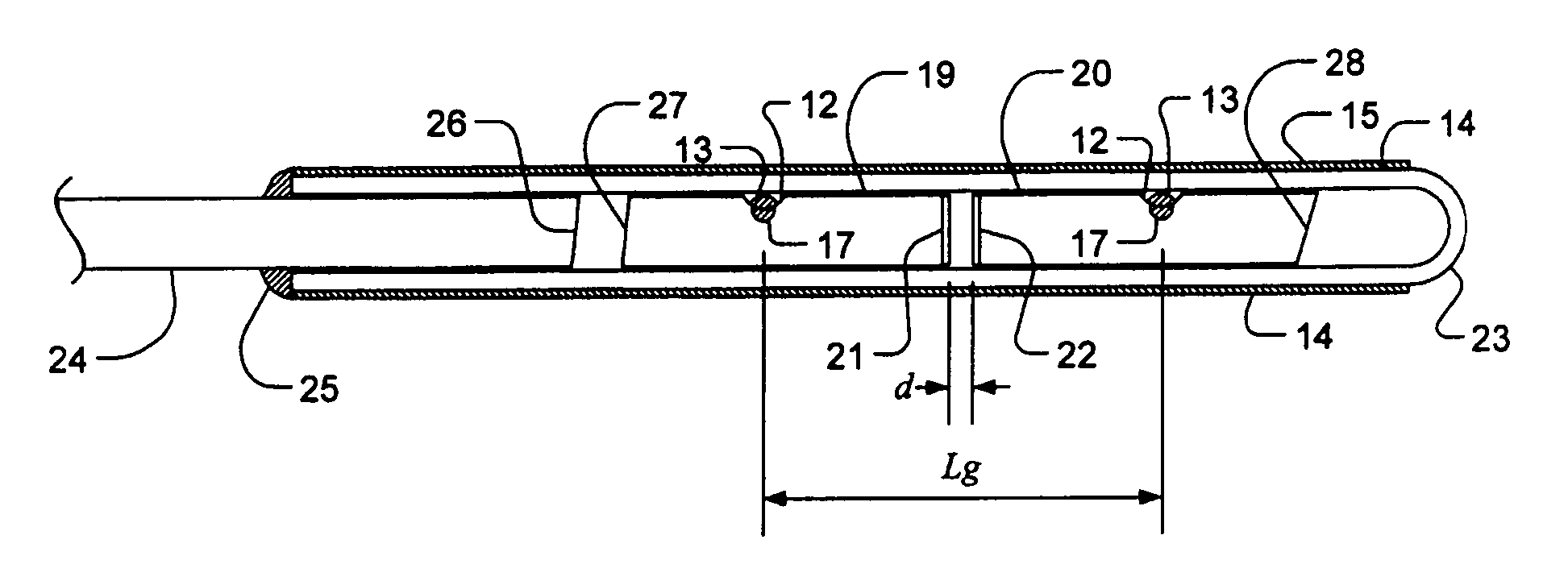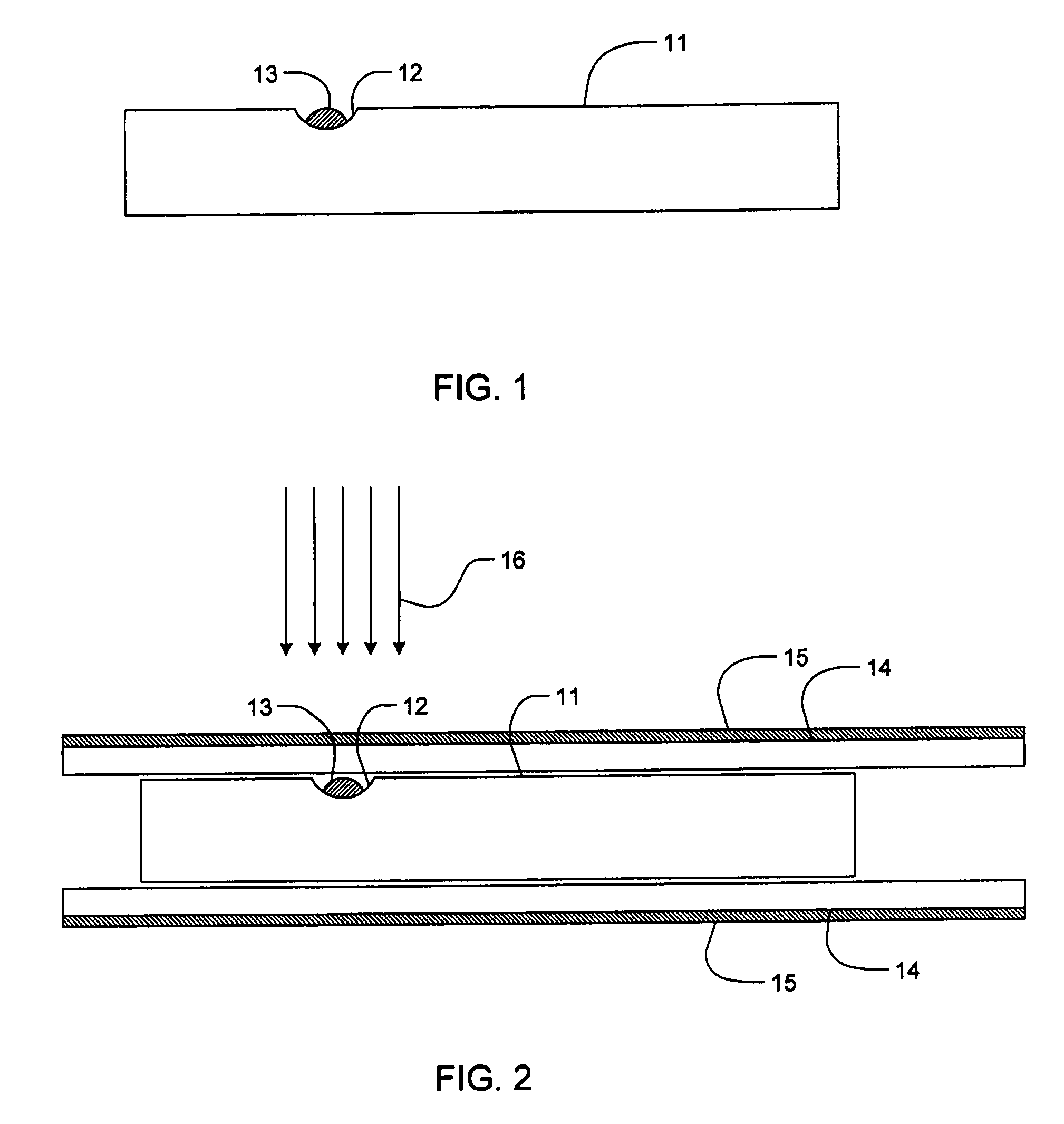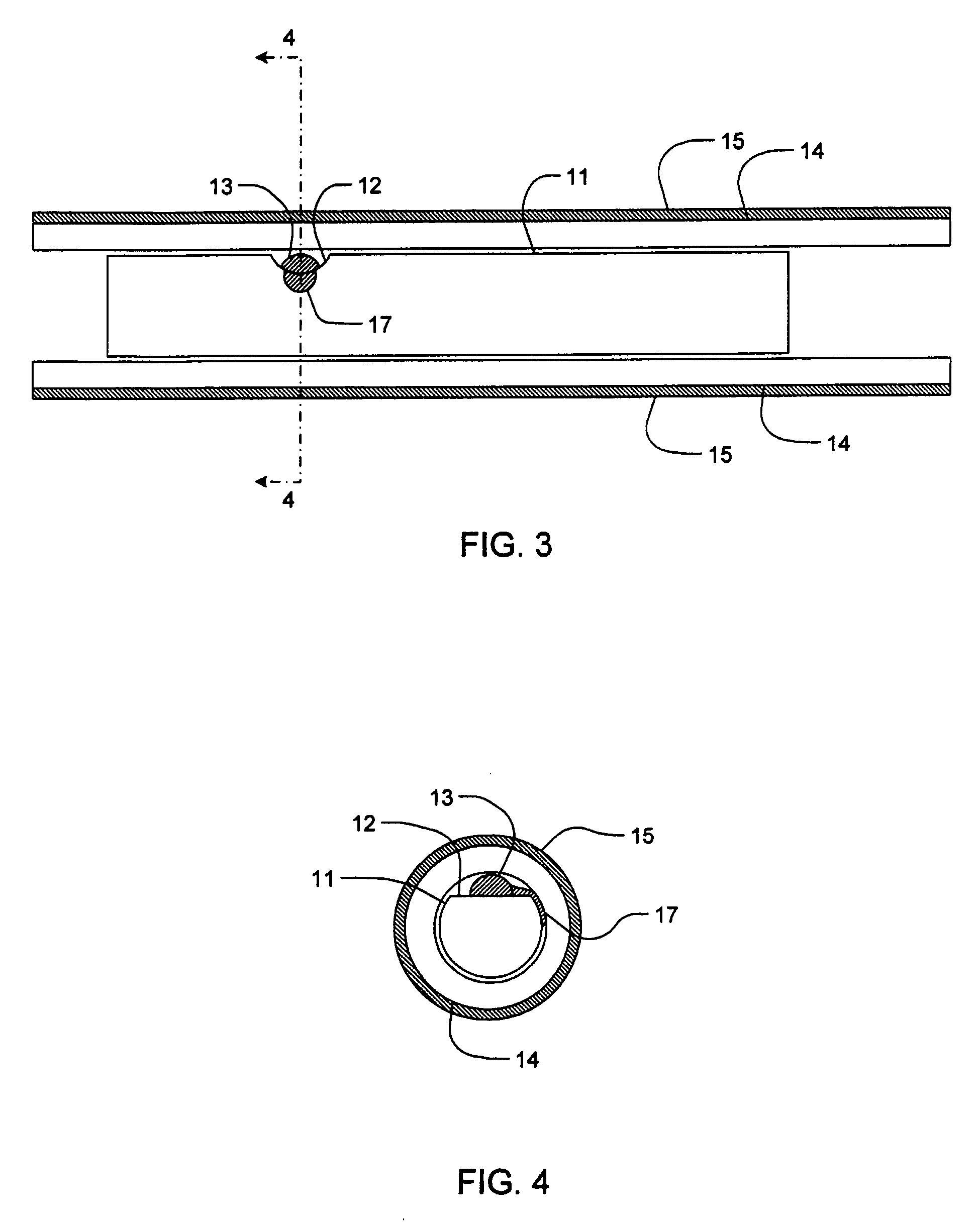Adhesive-assembled fiber-optic interferometer
a fiber-optic interferometer and fiber-optic technology, applied in the field of fiber-optic sensors, can solve the problems of fiber breakage, retain the disadvantage of having the sensor sensitivity strictly defined by the cavity length, and it is difficult, if not impossible, to properly control the ingress of adhesive into the capillary. , to achieve the effect of accurately controlling the amount of adhesive swelling and slowly complete the curing of adhesiv
- Summary
- Abstract
- Description
- Claims
- Application Information
AI Technical Summary
Benefits of technology
Problems solved by technology
Method used
Image
Examples
Embodiment Construction
[0028] In the following description of the embodiments, references to the accompanying drawings are by way of illustration of an example by which the invention may be practiced. It will be understood that other embodiments may be made without departing from the scope of the invention disclosed.
[0029] Referring to FIG. 1, a small recess 12, or a notch, has been carved on the side of an optical fiber 11. The fiber diameter is typically 125 μm. Hence the recess is very small: typically 30 μm deep and 50 μm wide. Many techniques can be used to make this recess: laser ablation, chemical etching and others. But one of the simplest ways is using a dicing saw with a thin diamond blade. If the blade has been properly worn out, the blade's edge forms a small radius. So when cutting in the direction perpendicular to the axis of the fiber, one can obtain a shallow cylindrical cut on the fiber surface. Good results have been obtained with a 55 mm diameter, 100 μm thick resin blade with 46 μm pa...
PUM
 Login to View More
Login to View More Abstract
Description
Claims
Application Information
 Login to View More
Login to View More - R&D
- Intellectual Property
- Life Sciences
- Materials
- Tech Scout
- Unparalleled Data Quality
- Higher Quality Content
- 60% Fewer Hallucinations
Browse by: Latest US Patents, China's latest patents, Technical Efficacy Thesaurus, Application Domain, Technology Topic, Popular Technical Reports.
© 2025 PatSnap. All rights reserved.Legal|Privacy policy|Modern Slavery Act Transparency Statement|Sitemap|About US| Contact US: help@patsnap.com



